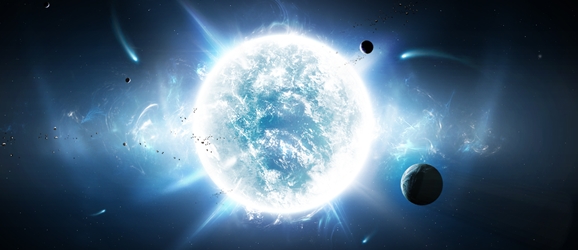Stars Possibly Formed As A Result of Newly Discovered Chemical Reaction
This article is more than 2 years old

These past 12 twelve years, seemingly more than any other similar span in history, have seen an influx of new things, from inventions to medical procedures to flavors of vodka. One might start to take this kind of mass advancing for granted, forgetting just how important some of these discoveries can be. Then in walks scientist Mark Hoffmann, who has proven the existence of a previously unknown form of chemical bonding. And you thought you had a big week.
Hoffmann, a globally known University of North Dakota computational chemist, working with Norwegian colleagues Tryve Helgaker, E.I. Tellgren, and K. Lange, discovered magnetic bonding on a massive level happening within white dwarfs, super-dense stars nearing the end of their evolutionary life cycle. “There was speculation that this phenomenon should exist, but no one had the proof, and no one — until the team I’m on described the process — had the theoretical structure and the computational tools to address this,” Hoffmann said.
“White dwarfs have an unusual spectrum that has been thought to result from polymerized hydrogen and helium which, of course, do not occur on Earth,” he continued, in an article published in the journal Science. What makes them so damned special that Earth can’t make them, you ask?
Sirius B is the closest white dwarf to us. It’s about the same size as our sun, but is far denser, averaging 1.7 metric tons per cubic centimeter, or about 3,000 pounds smooshed up into a cube the size of a game die. Magnetic fields on Sirius B are central to 200,000 to 400,000 Tesla, the unit for magnetic flux density. In comparison, the planetary magnetic field that justifies your compass is only 0.00005 Tesla, and a common bar magnet is 0.01 Tesla. The farthest man-made magnets have reached an apex of 1,000 Tesla. To use an unattractive analogy, Sirius B is like the greatest musician who ever lived, and the Earth is the band Tesla.
Magnetic strength of this magnitude actually affects the way the atoms come together, which is an altogether unstudied reaction thus far, though the researchers had their predictions. And we’re talking about a guy who is known primarily for his work in theory and computer modeling of chemical compound formation. Such a discovery’s effects on Earth would be…well I don’t know what they would be. I picture a world of Ben Grimms hardening into rock.
In a perfectly suitable way that still makes him sound like a villain who has Mab Libbed together a statement to fool people into believing he’s someone he isn’t, Hoffman explains their process. “We computationally modeled the behavior that we theorized, based on universally applicable physical principles.” Of course you did. But seriously, congratulations to their team for proving that science still hasn’t let us in in all of its secrets.












